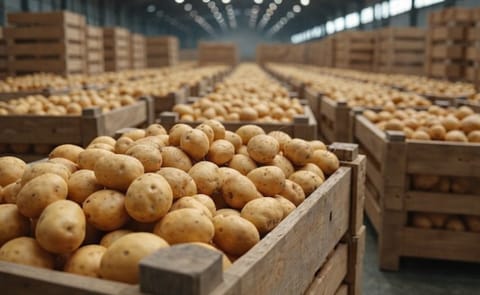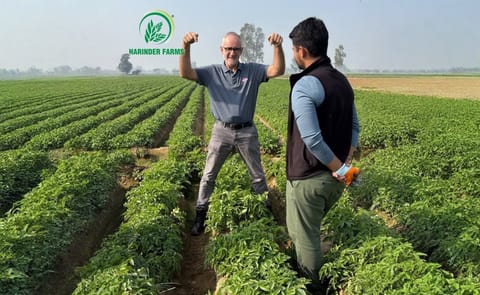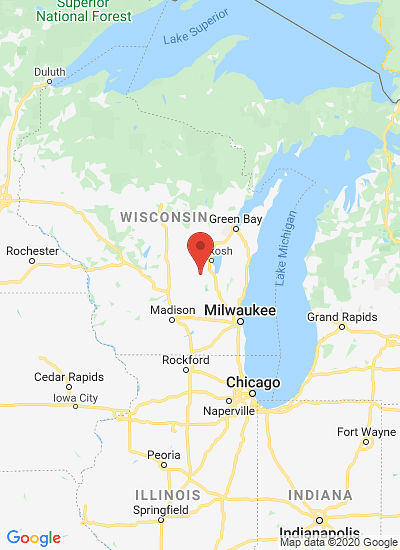Worldwide consumption of potatoes is increasing, according to Blair Richardson, chief executive officer of Potatoes USA
Global demand for potatoes is up, but US market share is down
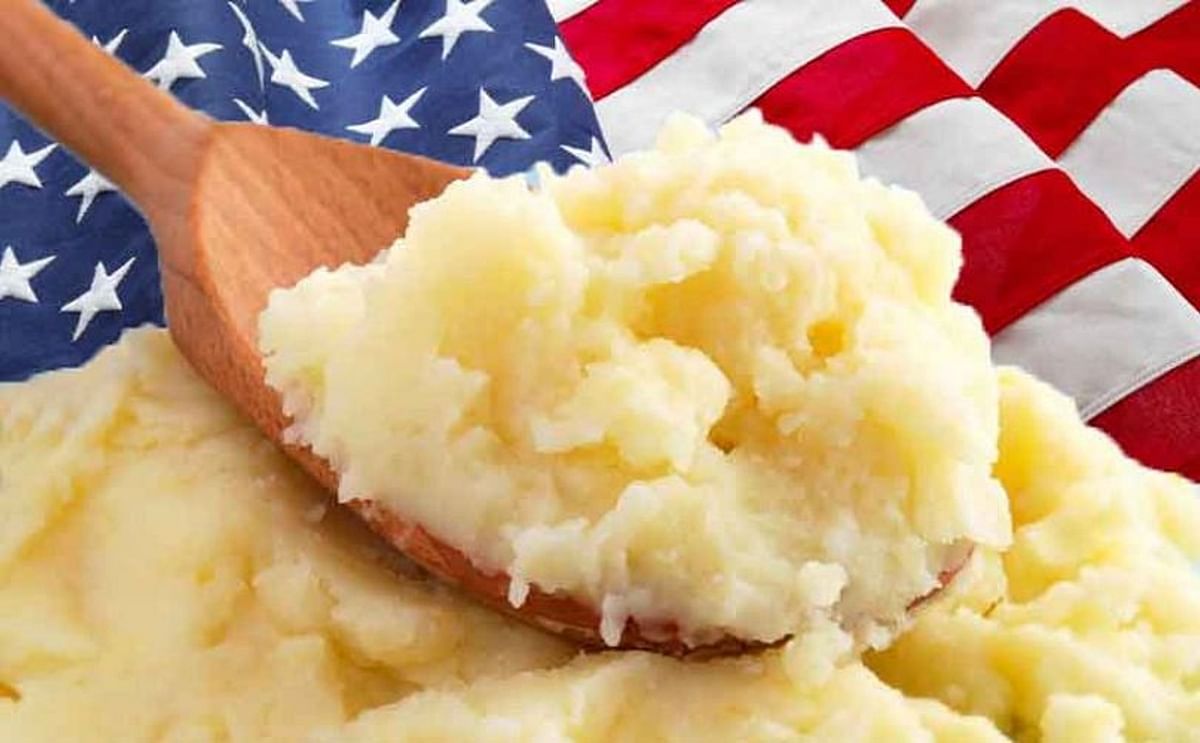
Worldwide consumption of potatoes is increasing, according to Blair Richardson, chief executive officer of Potatoes USA during a recent meeting of Wisconsin potato growers.
Blair Richardson, chief executive officer of Potatoes USA:
“Not only are we seeing positive growth at the retail level, we’re also seeing significant increases in the food-service sector.”
“This year, for the first time ever, food-service sales will exceed retail sales.”
He pointed to a change in eating habits as an opportunity for new industry growth.
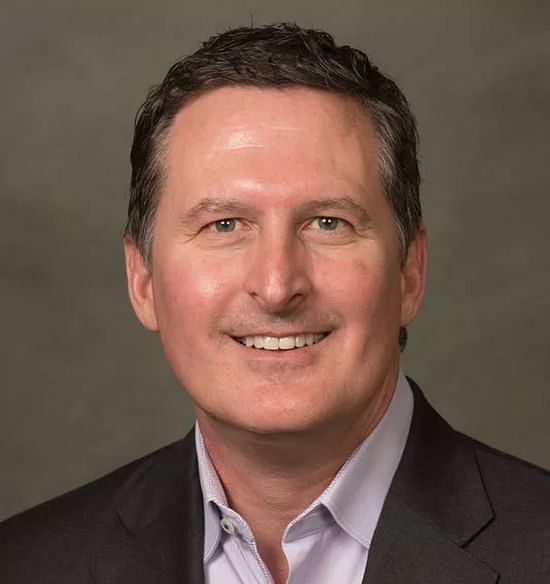
Blair Richardson, chief executive officer of Potatoes USA
Blair Richardson:
“A lot of people are eating at restaurants and other food-service venues, and we don’t see this change reversing itself anytime soon.”
“Today people love to watch cooking shows more than they love actually cooking. Our research shows that only about 10 percent of Americans love to cook anymore.”
“We love looking at food and we love eating but we just want somebody else to do the cooking.”
Richardson emphasized that potatoes fit in well with all the current food trends.
Blair Richardson:
“That’s why people are switching back to potatoes and why the demand for potatoes is increasing.”
“If you’re depending on other people to cook part, or all, of your meals, we fit well in all the cuisines that people are interested in."
Industry challenges
Critical challenges, however, remain for the U.S. potato industry.
Blair Richardson:
“Many chip contracts were cut, and those growers are having a tough time and we’ll continue to see changes in the marketplace for people who buy potatoes and ship them around the world as they adjust to what makes most sense from a business standpoint.”
He stressed that international markets remain crucial to grower success because, “one out of every five potatoes grown in the U.S. now goes overseas, and we don’t want to lose those markets.”
U.S. growers are facing stiff competition from new producers.
Blair Richardson:
“Turkey has become a significant player in the global market for frozen fries, and has taken some of our market share.”
“Europe has increased production, with Belgian showing a 1,000 percent growth rate over the last decade, and that’s all going into frozen potato products.”
“We had about 50 percent of the global market in frozen potato products 15 to 20 years ago, but today we’re at 24 percent, while Europe has gone from 15-20 percent to 44 percent market share.”
New opportunities
Despite losing market share, U.S. growers are increasing exports.
Blair Richardson:
“We’ve been able to do that because people are eating a lot more potatoes than they did 20 years ago.”
The demand for potatoes is growing faster internationally than it is here in the United States
Blair Richardson:
“It’s a huge opportunity, and once we’re able to get this figured out and get the capacity that we need to produce more potato products for the international market, we should be able to reclaim some of that lost market share.”
New programs have been developed to improve sales in South Korea, Central America, Malaysia and Japan. Growers also are tapping into new markets by exporting commercial seed potatoes to sub-Sahara African nations.
He noted that over the past 20 years there’s been very little investment in processing plants for frozen potato products in the United States. Blair Richardson:
“While we haven’t been making this investment Europeans have, but In the past couple of years we’ve seen the processors come back to the U.S.”
“Several new plants are coming online, which should increase production capacity significantly over the next decade.”
“That will give us the opportunity to go back and take advantage of that overseas demand.”
Back to School
The school food-service industry has become an important new category for potato sales, according to Richardson.
Blair Richardson:
“We actually go into schools and speak with dietitians and nutritionists about the importance of potatoes and give them recipes to provide healthy potato options presented in creative ways that their students will like.”
Developing recipes for school menus presents unique challenges.
Blair Richardson:
“With consumers, it’s all about flavor and portion, but when you develop a recipe for schools, you have to focus on cost per serving, nutritional content, and make it fit in their system, which may be a little different for every school.”
“We are having that conversation, and making significant progress in that market.”
“Because potatoes are very nutritious, students love them and they are a low-cost item for schools to put on their menu.”
Potatoes = Performance
Potatoes USA is investing about $1.75 million per year on nutrition research.
Blair Richardson:
“We’re using this information to build programs for the future to help change the perception of the potato from a negative image as a starch food for sedentary people into a performance food for athletes and other active people.”
“Potatoes USA wants consumers to know that Potatoes = Performance.”

“Potatoes USA wants consumers to know that Potatoes = Performance.”


